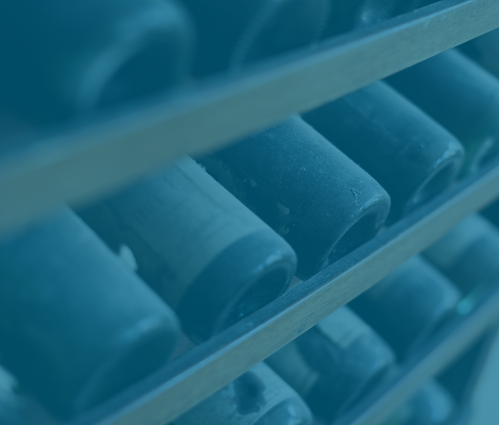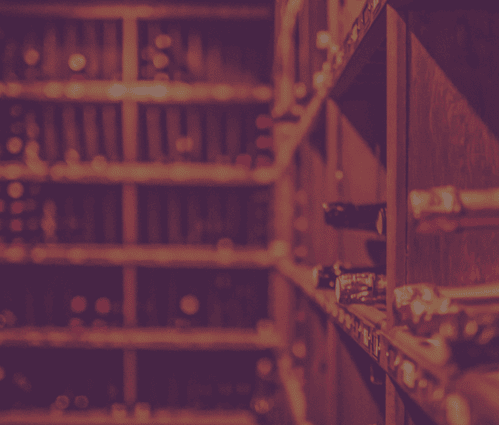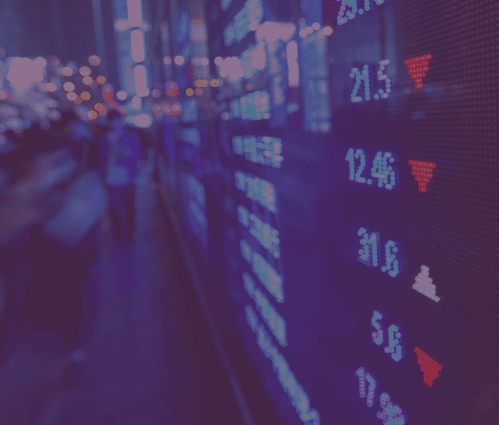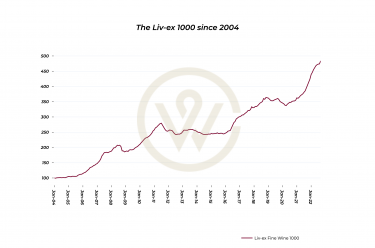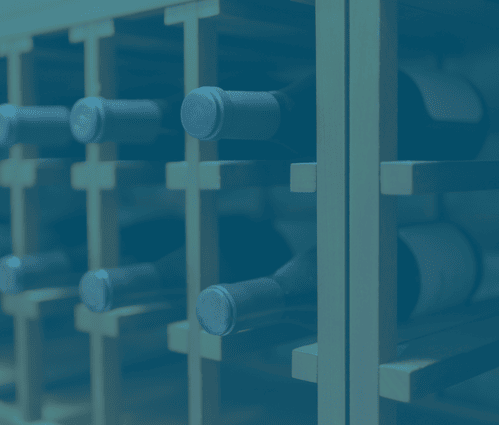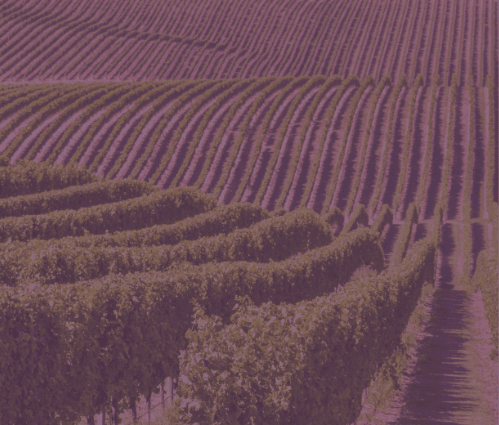NFTs (Non-Fungible Tokens) and fine wine may seem like an unlikely pairing. After all, wine is one of the very oldest investments, while NFTs are among the newest digital advancements. The markets couldn’t be more different either. While 20-somethings snap up digital tokens in the metaverse, 60-somethings traditionally dominate the fine wine universe at auction houses. But it’s precisely this titanic clash of old and new which is firing up the market so vigorously.
Like a jolt of electricity, a surge of digital advancements is jump-starting the established wine industry … and it’s bringing floods of eager new buyers along with it.
Vineyards get a taste for blockchain
Over the past year, esteemed vineyards have started to sell NFTs with bottles attached to them. Just like a certificate or receipt of purchase, but far more secure. When the investor is ready, they will redeem the NFT for the physical bottle. In the meantime, it’s usually stored securely for them.
Since blockchain cannot be altered or tampered with, some wineries are using the technology to guarantee quality and combat fraud. In recent years, counterfeit bottles and scammers have plagued the industry, costing wine investors upwards of 2.7 billion euros a year[1]. Using certified NFTs reassures buyers that the bottles they’re paying for are indeed the ones they’re getting.
Some vineyards, such as Màquina y Tabla, use this technology to sell wine en primeur[2] – or as wine futures. The international nature of NFTs lends itself well to this. Within the blockchain, investors can check exactly what chemicals, conditions and processes were used to make the wine. They can closely scrutinize the sustainability levels too.
Some experts are even suggesting that the default currency of fine wine could soon become crypto as the pound continues to encounter volatility.
New investors enter the wine market
The emerging NFT space couldn’t be more different from the traditional wine market. At the time of writing, most NFT investors come from India, Vietnam, Hong Kong, Singapore, and Brazil[3]. The age demographic is different too. Most NFT investors are between 18 and 34 years old.
While most NFT investors are true digital natives, they’ve also grown up in a snowball of recessions. This makes asset-backed digital investments like fine wine a welcome and intriguing option. Unlike most other NFTs, it’s something you can touch, with intrinsic value.
At the time of writing, this new breed of wine NFT investors seem keen, and they have money. Penfold’s 2021 NFT famously sold within just 12 seconds[4]. And in summer 2022, an NFT linked to an exclusive champagne bottle went for an eyewatering $2.5 million[5].
Additional income streams will benefit vineyards
As well as the new clientele, there’s another compelling reason why vineyards may be keen to sell NFTs with bottles attached. Perhaps it’s the strongest incentive of them all. Each time the NFT is traded, the vineyard can opt to get a small cut of the price.
Over time, as the wine NFT changes wallets, these incremental profits can stack up.
Extra streams of passive income will surely be very welcome to vineyards, as the industry grapples with climate change and forest fires. Producers can use the revenue to continue adapting, experimenting, or simply making up a cash shortfall – all of which is good news for wine investors.
Vineyards are keen to develop and invest in the NFT space. Some of the most famous wine families, including the houses of Rouzaud (Champagne Roederer and Château Pichon-Comtesse), Reybier (Saint-Estèphe’s Château Cos d’Estournel), Moueix (Videlot) and Perrin (Château de Beaucastel) poured a whopping 6 million euros into Winechain, a new wine NFT platform. It surely goes without saying that they’re likely looking for a return on their investments.
Vineyards can be more creative with NFTs
Trading NFTs online also gives vineyards a chance to include the kind of extras and luxuries that investors enjoy. There is almost unlimited room for creativity.
Château Angélus, for example, also include digital artwork and virtual wine-tasting sessions in the fine wine NFT package. The art appeals to NFT investors keen to build on their collection of unique digital assets. They can showcase these in their metaverse home or sell on to others. The wine tasting, of course, appeals to almost everyone.
New Zealand-based vineyard, Hello Fam, took things even further. This vineyard partnered with Graham Norton – voice of Eurovision and host of the One Show – to offer NFTs for their limited edition “HeDevil” wine. The NFT includes two bottles, physical artwork, and one lucky buyer got to attend a virtual tasting with Norton himself.
Unlike traditional bottles and barrels, vineyards can truly tailor wine investments and experiences around buyers. This opens the door to new potential, new markets, and new possibilities.
Investors should be wary of risks
While there is a world of possibility around these new digital advancements, there are drawbacks too.
The world of NFTs moves fast… a little too fast. With all the hype and possibilities around these digital advancements, it can be easy to get carried away. But – as always with investing – it’s important not to get swayed by the market noise.
As the oracle of Oklahoma, Warren Buffet, famously said, “The most important quality for an investor is temperament, not intellect. You need a temperament that neither derives great pleasure from being with the crowd nor against the crowd”.
Before diving into the fast-paced world of NFT wines and metaverse investments, investors should consider their long-term strategy and conduct careful analysis. Although vineyards create authentic NFTs, there are likely to be fakes around.
What’s more, NFTs are traded using cryptocurrency, so investors cannot buy and sell them with fiat money like pounds, euros, or dollars. This comes with its own set of headaches. Firstly, these digital coins are famously volatile. In March 2022 – an especially bad time – the value of Bitcoin fell by a colossal 60%[6]. Over 2023, some experts are predicting a further 40% drop[7]. The second largest cryptocurrency, Ethereum, has also been on a rollercoaster. In December 2021, a single coin was worth $4,624, fast-forward one year and it’s $1,296 – less than a third of the value[8].
The process of mining and trading cryptocurrencies – and by extension – NFTs is also reportedly detrimental to the environment. By contrast, fine wine investments are usually quite sustainable, and so NFTs could undo many of those important benefits.
Another consideration consideration of digital advancements in the industry is that cryptocurrency has been banned in nine countries, including China. This means that the waves of Asian investors entering the wine market, are probably coming through the traditional route.
The value of fine wine is likely to increase … But at what cost?
The new generation of buyers is likely to increase the market value of fine wine. As any economist will tell you, when demand outstrips supply, prices go up. It’s excellent news for today’s investors who may find that they can sell bottles for higher prices with greater liquidity.
However, investors who are looking to buy into NFT wines themselves should exercise caution. The space is still new and emerging, and regulations are being discussed as we write.
The environmental impact of NFTs and cryptocurrency on vineyards is already raising some eyebrows. Climate change alters the value of fine wine more than almost any other factor. While the marketplace welcomes new buyers and innovations, the integrity of fine wine must always come first.
Find out more about the latest fine wine trends and prices.
[2] Source: Club Enologique
[5] Source: NFT Evening
[8] Source: Yahoo Finance

